As two major players in the industry, choosing between ServiceNow & Remedy can be challenging. This comparison blog, "ServiceNow vs Remedy," examines their features and analyzes them to help you make an informed decision.
Today’s businesses rely heavily on IT Service Management solutions to streamline critical IT tasks and operations. This high demand has resulted in a broad range of options available in the marketplace. As a result, selecting the right ITSM tool can be challenging, especially with leading contenders like ServiceNow and Remedy.
According to Gartner, ServiceNow vs Remedy make up almost 50% of the market. Both offer powerful features, but finding the one that truly aligns with your organization’s needs is crucial. The wrong choice could lead to inefficiencies, higher costs, and a frustrating experience for your IT team. You need a solution that not only meets your current requirements but also scales with your business as it grows.
In this comparison blog, we'll break down the key differences for ServiceNow vs Remedy, helping you make an informed decision on which ITSM tool is the best fit for your organization.
ServiceNow: An Intro
ServiceNow is a leading IT Service Management (ITSM) platform designed to enhance and streamline IT operations within organizations. Known for its powerful capabilities, ServiceNow offers a suite of tools to automate and manage IT services, including incident management, problem management, change management, and asset management. Further, it provides a comprehensive set of features and tools for managing IT services, employee workflows, and customer service requests.

The platform is built on a cloud-based architecture, which allows for scalability and flexibility, making it suitable for organizations of various sizes. ServiceNow's user-friendly interface and robust integration options enable businesses to improve efficiency, reduce downtime, and provide better service to their users.
With features like workflow automation, real-time reporting, and a comprehensive service catalog, ServiceNow helps organizations optimize their IT processes and drive overall productivity. Its strong focus on customization and user experience ensures that IT teams can tailor the platform to meet their specific needs and business goals.
Remedy (BMC Helix): An Intro
BMC Remedy offers a IT Service Management (ITSM) platform designed to enhance and automate IT operations for businesses. It offers a range of features aimed at improving the efficiency and effectiveness of IT service delivery, including incident management, problem management, change management, and asset management. The solution provides reporting features that allow you to create custom reports and convert them into interactive dashboards.

Built on a robust, scalable architecture, BMC Remedy supports a wide array of ITSM processes, providing organizations with the tools they need to manage complex IT environments. Its customizable workflows and integration capabilities allow businesses to tailor the platform to their specific requirements and ensure seamless operations.
Key features of BMC Remedy include advanced reporting, real-time analytics, and automation tools that help streamline IT processes, reduce operational costs, and improve service quality. With a strong emphasis on flexibility and user experience, BMC Remedy aims to support IT teams in delivering exceptional service and driving organizational success.
ServiceNow vs Remedy: Detailed Comparison
1: Ease Of Implementation
When evaluating ITSM platforms like ServiceNow and BMC Helix ITSM, ease of implementation is a critical factor. A platform that is easier to set up and integrate with existing systems can save significant time and resources.
According to Gartner Peer Insights, ServiceNow is known for its relatively straightforward deployment process. Its cloud-based architecture and robust support resources help streamline the initial setup and integration with other business systems. This often results in a faster go-live time and less disruption to ongoing operations.
On the other hand, BMC Helix ITSM also offers a comprehensive implementation process. Its micro-service architecture can provide flexibility, but some users report a steeper learning curve due to the system's complexity. The deployment may require more time and effort to align with specific organizational needs.
ServiceNow benefits from a user-friendly setup, thanks to its pre-configured solutions and strong support network. This can lead to quicker adoption and a smoother transition for IT teams.
BMC Helix ITSM offers a flexible setup but may involve a more intricate implementation process. This flexibility can be advantageous for organizations with unique requirements, though it might result in a more extended setup period.
In summary, ServiceNow tends to offer a more straightforward implementation experience with its ready-to-use solutions, while BMC Helix ITSM provides flexibility but may require a more complex setup.
2: Ticket Management Capabilities
When comparing ServiceNow vs Remedy, evaluating their ticket management capabilities is crucial as it directly affects how efficiently your IT support team can handle and resolve issues. Here's a detailed look at how each platform handles ticket management:
ServiceNow
- Ticket Creation: ServiceNow offers multiple ways to create tickets, including via email, web forms, and automated triggers. It supports intuitive ticket submission through user-friendly interfaces and integrates with various communication channels.
- Ticket Routing and Assignment: It uses advanced workflows to automatically route and assign tickets based on predefined rules and criteria. This ensures that tickets are directed to the appropriate team or individual, improving response times and efficiency.
- Tracking and Resolution: ServiceNow provides comprehensive tracking features that allow users to monitor the status and progress of their tickets in real-time. It offers robust tools for ticket resolution, including knowledge base articles, automated responses, and collaboration features.
- Customization: Users can tailor ticket fields, workflows, and categories to meet their specific needs, providing flexibility in how tickets are managed and resolved.
BMC Remedy
- Ticket Creation: BMC Remedy also supports various methods for ticket creation, such as through email, web forms, and manual entry. It provides options for users to log tickets via a centralized portal or directly through other communication channels.
- Ticket Routing and Assignment: Remedy features configurable routing and assignment rules to ensure that tickets are handled by the appropriate personnel. The system allows for customization of ticket assignment based on urgency, type, and other criteria.
- Tracking and Resolution: BMC Remedy offers strong ticket tracking capabilities, allowing users to view the status and history of their tickets. The platform supports resolution through a combination of manual updates and automated workflows, with access to a knowledge base for self-help.
- Customization: Remedy provides options to customize ticket management processes, including workflows, forms, and ticket categorization, to suit the organization’s specific requirements.
Both ServiceNow and BMC Remedy provide comprehensive ticket management solutions, but they have different strengths.
ServiceNow excels in ease of use, automation, and extensive integration capabilities, offering a seamless experience for handling tickets across various channels. BMC Remedy is also robust, with strong customization options and effective tracking, but may have fewer integrations compared to ServiceNow.
The choice between the two will depend on your organization’s specific needs for ticket management, integration, and customization.
3: Integration Capabilities
Integration is crucial for ITSM software as it connects various IT processes and systems, allowing for more informed decision-making. Here’s a closer look at how ServiceNow and BMC Helix ITSM compare in terms of integration:
ServiceNow ITSM
- Integration Capabilities: ServiceNow is renowned for its extensive integration capabilities, supporting a wide range of systems and applications. This flexibility allows organizations to seamlessly connect their ITSM with other tools and platforms.
- Ease of Integration: ServiceNow is designed with integration in mind, offering a straightforward process and comprehensive guidance to ensure successful implementation. It holds a 4.1 rating from Gartner for its ease of integration, indicating a user-friendly experience.
- Technologies and Methods: ServiceNow supports various integration tools and methods, including:some text
- REST API
- LDAP
- JDBC
- Excel, CSV, Email
- SOAP
- No-Code Integration: ServiceNow excels in no-code integration, allowing users to connect systems through a graphical user interface (GUI) rather than requiring programming knowledge.
- Custom Integration: Users can develop custom APIs for tailored integrations with third-party applications, providing high flexibility to meet specific business requirements.
- Pre-Built Integration: ServiceNow's IntegrationHub offers numerous pre-built integration spokes, facilitating seamless connections with other systems and applications.
- Integration Support: ServiceNow provides robust support for integration, assisting users in resolving issues and optimizing their integration setups.
BMC Helix ITSM
- Integration Capabilities: BMC Helix ITSM also supports integration with various systems, though it may not be as extensive as ServiceNow's offerings.
- Ease of Integration: The ease of integration with BMC Helix ITSM can vary depending on the complexity of the systems being integrated. It holds a 3.9 rating from Gartner, reflecting some challenges in the integration process compared to ServiceNow.
- Technologies and Methods: BMC Helix ITSM uses several tools and technologies, including:some text
- APIs
- Web services
- C and Java APIs
- LDAP
- ODBC
- No-Code Integration: BMC Helix ITSM supports no-code integration but has some limitations compared to ServiceNow's more advanced GUI-based approach.
- Custom Integration: The platform allows for custom integrations, although it lacks support for REST APIs, which can limit some customization options.
- Pre-Built Integration: BMC Helix ITSM includes pre-built integrations for platforms like Jira, AWS, and Salesforce Service Cloud, though these integrations may have certain limitations.
- Integration Support: BMC Helix ITSM offers support for integration, but the level of assistance may vary depending on the complexity of the integration needs.
In summary, ServiceNow generally offers a more extensive and user-friendly integration experience with broader support and pre-built options. BMC Helix ITSM provides solid integration capabilities but may face limitations and challenges in comparison.
4: Flexibility & Configuration Options
When comparing ServiceNow and BMC Remedy, the flexibility and setup options each platform offers are crucial factors to consider, especially for organizations that need to tailor their IT service management (ITSM) tools to meet specific needs.
- ServiceNow is well-known for its high level of flexibility. One of its key strengths is the ability to customize both the user interface (UI) and user experience (UX). This means organizations can adapt the platform’s appearance and functionality to match their brand and operational requirements. For example, dashboards, reports, and workflows can be modified to fit specific business processes.
Additionally, ServiceNow offers a range of configuration options that do not require extensive coding knowledge. This makes it accessible for non-technical users to make adjustments through the platform’s intuitive graphical user interface (GUI). However, more complex customizations, such as creating bespoke applications or integrations, may require some technical expertise. This flexibility allows companies to innovate and evolve the platform as their business needs change.
- BMC Remedy, while strong in many areas, is more limited in terms of flexibility compared to ServiceNow. Remedy comes with a more rigid structure, offering fewer options for altering the UI and UX. This means that organizations using BMC Remedy are generally confined to the default look and feel provided by the platform.
If customization is needed within Remedy, it typically involves manual work by a developer or IT administrator who is well-versed in the platform. This process can be more time-consuming and often requires significant technical skills, making it less accessible for organizations that lack in-house expertise.
The difference in flexibility between ServiceNow and BMC Remedy can have a significant impact on user adoption and satisfaction. ServiceNow’s customizable interface can be tailored to better meet the needs of end-users, potentially leading to higher productivity and more efficient workflows. In contrast, BMC Remedy's more standardized interface might limit the ability to optimize user interaction, which could affect how smoothly teams work within the platform.
However, greater flexibility can also introduce complexity. ServiceNow’s broad customization options might lead to more complex setups that require ongoing management, whereas BMC Remedy’s standardized approach could result in a more straightforward, if less personalized, user experience.
The choice between these platforms should be based on your organization’s specific needs, available resources, and long-term IT strategy.
5: Pricing: Cost Per User
When comparing ServiceNow vs Remedy, the cost per user is an important factor to consider, as it impacts your overall budget for IT service management tools.
ServiceNow:
- Cost: ServiceNow is priced at approximately $5 per user per month. However, the exact pricing is only disclosed after booking a demo.
- Value: Despite its lower cost, ServiceNow offers a broad range of features and integrations. It connects seamlessly with other popular tools like Salesforce and Slack, providing added value for organizations using multiple platforms.
- Cost-Effectiveness: For companies with a diverse set of tools or who are looking to streamline their IT operations while keeping costs in check, ServiceNow can be a more economical choice. Its competitive pricing combined with extensive functionality makes it a strong option for cost-conscious businesses.
BMC Remedy:
- Cost: BMC Remedy starts at around $15 per user per month, making it a more expensive option. However, the exact pricing is only disclosed after booking a demo.
- Value: While BMC Remedy is pricier, it provides a robust set of features tailored for IT service management. However, it does not offer the same level of integration with other tools as ServiceNow.
- Cost-Effectiveness: If your organization primarily uses Remedy and does not need extensive integration with other tools, the higher cost might be justifiable. However, for those looking for more integrated solutions and better pricing, ServiceNow might offer greater value.
In terms of cost per user, ServiceNow typically presents a more budget-friendly option while offering extensive features and integrations. BMC Remedy, though more expensive, may still be a suitable choice for organizations with specific needs or those already invested in its ecosystem.
ServiceNow vs Remedy: Which One Should You Choose?
When deciding between ServiceNow vs Remedy, it’s essential to evaluate your organization’s specific needs and priorities. Both platforms offer robust ITSM solutions, but they cater to different business requirements.
For instance, if your focus is on scalability and future growth, ServiceNow stands out. ServiceNow is a cloud-native platform known for its easy scalability and modular architecture. As your business expands, ServiceNow’s flexible design allows you to seamlessly add new modules and features without disrupting existing operations. This makes it an excellent choice for organizations that anticipate rapid growth or need a solution that can evolve with their changing needs.
On the other hand, if you have complex legacy systems that necessitate on-premise deployment, BMC Remedy is the better option. BMC Helix ITSM provides the flexibility to maintain control over your infrastructure, allowing you to adhere to strict security and compliance requirements that might not be achievable with a cloud-based solution.
Ultimately, the choice between ServiceNow vs Remedy depends on your organization's specific needs. If you require on-premise deployment, BMC Helix ITSM is the way to go. If scalability, ease of integration, and a modern, modular architecture are your priorities, ServiceNow is likely the better fit. Carefully assess your organization’s current and future requirements to make an informed decision that aligns with your IT strategy.
However, both ServiceNow and Remedy have a significant limitation: they don't offer an automated self-service portal for managing high-ticket queries and access requests. This is where Zluri's access request management stands out, providing an effective solution to streamline these processes. Let's explore how!
Zluri’s Self-Service Portal: Accelerating Ticket Resolution
Managing daily access request ticket volumes and approvals is a crucial part of IT service management, and this is where Zluri makes a real difference. Zluri provides a powerful access request management solution that helps IT teams cut down on manual tasks and speed up access to resources. It tackles common issues like delays in granting access, overloaded teams, and neglected critical service requests.

With Zluri, organizations can set up multi-step approval workflows, get notifications via Slack, and automatically grant access to specific apps. This structured approach not only improves efficiency but also helps maintain security and compliance.
On top of this, KuppingerCole's research highlights that Zluri's self-service streamlines access requests, improving employee experience and IT workflows. This approach helps organizations prevent access delays, reduce errors, and ensure strong security and compliance with regulations like CCPA, SOX, and GDPR.
Key features of Zluri include:
- Employee App Catalog: Zluri offers an easy-to-use Employee App Catalog, similar to popular app stores. This feature allows employees to quickly search for and request access to the applications they need, enhancing productivity and effectiveness.

- Streamlined and Customizable Approval Process: Instead of relying on ticket-based approval systems, Zluri simplifies the process with quick decision-making and customizable approval policies. This helps prevent SLA breaches and aligns with organizational needs and compliance standards.
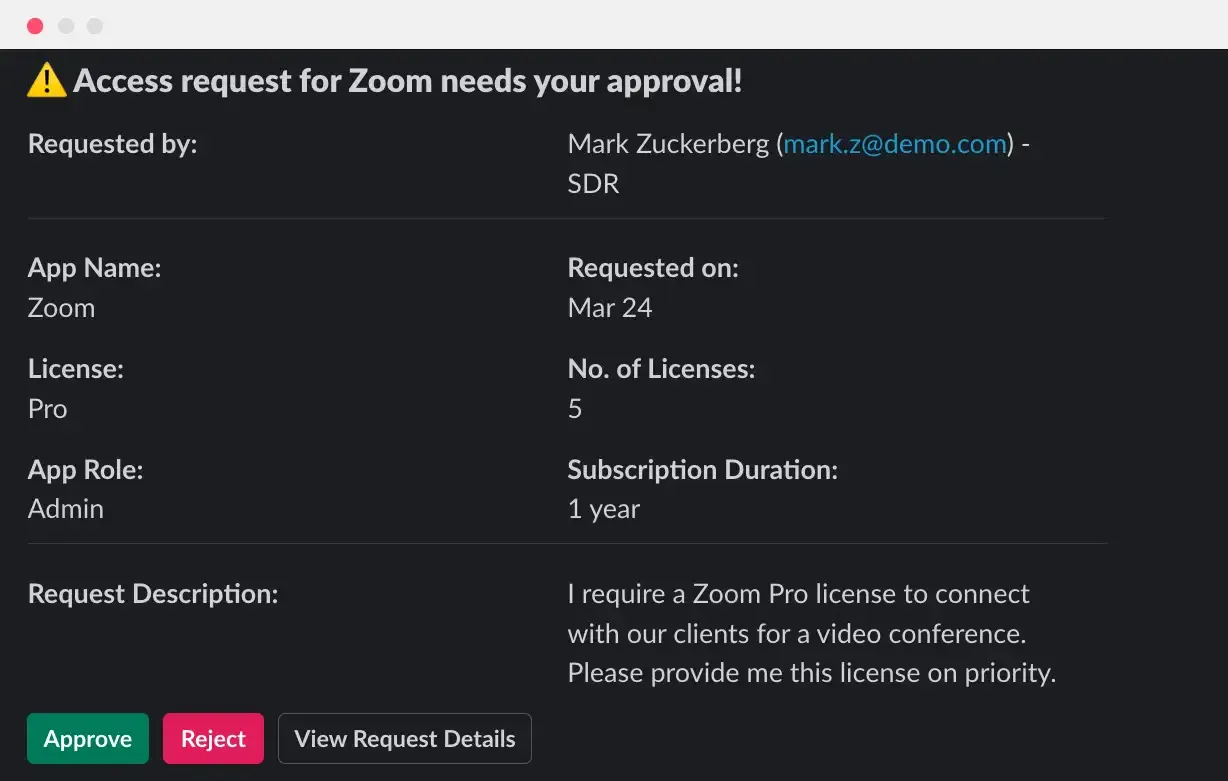
- Seamless Integration with Slack: Zluri integrates with Slack, providing automatic notifications to approvers about pending requests. This facilitates quicker reviews and decisions, boosting productivity and response times.

- Override Stalled Requests: Zluri allows IT admins to override stalled requests, ensuring that access provisioning continues smoothly without delays caused by bottlenecks or unforeseen issues.

Want to see Zluri in action? Schedule a personalized demo today!
Frequently Asked Questions (FAQs)
1: Is Remedy a good ticketing system?
Yes, Remedy is a highly regarded ticketing system, particularly in large enterprises. It provides comprehensive features for incident, problem, and change management, with strong reporting and compliance tools. Its integration with other ITSM processes and its ability to handle complex workflows make it a solid choice for organizations with demanding IT environments.
2: Is ServiceNow better than BMC?
ServiceNow is often considered better than BMC (Remedy) for many organizations due to its user-friendly interface, faster deployment, and strong cloud-native capabilities. It offers extensive automation, integration options, and scalability, making it easier to adapt to evolving business needs. However, BMC Remedy is still preferred by some large enterprises for its deep customization, robust compliance features, and ability to handle complex IT environments. The choice between the two often depends on the specific needs and priorities of the organization.
3: What is a remedy tool used for?
The Remedy tool, specifically BMC Helix ITSM, is used for IT service management. It helps organizations manage IT operations, including incident, problem, change, and asset management. Remedy is known for its robust capabilities in handling complex IT environments, offering features like workflow automation, compliance management, and integration with other enterprise systems. It’s widely used in industries where detailed tracking and regulatory compliance are critical.
4: Are Remedy and ServiceNow the Same?
Remedy and ServiceNow are both powerful IT Service Management (ITSM) tools, but they are not the same. They are distinct platforms with their own features, strengths, and target audiences. Your choice between the two should be guided by your organization’s specific requirements, the complexity of your IT environment, and your long-term ITSM strategy.
ServiceNow Vs Remedy: Which ITSM To Choose?
According to Gartner, ServiceNow & BMC make up almost 50% of the market. As two major players in the industry, choosing between them can be challenging. This comparison blog, "ServiceNow vs Remedy," examines their features and analyzes them to help you make an informed decision.
Today’s businesses rely heavily on IT Service Management solutions to streamline critical IT tasks and operations. This high demand has resulted in a broad range of options available in the marketplace. As a result, selecting the right ITSM tool can be challenging, especially with leading contenders like ServiceNow and Remedy.
ServiceNow vs Remedy - both offer powerful features, but finding the one that truly aligns with your organization’s needs is crucial. The wrong choice could lead to inefficiencies, higher costs, and a frustrating experience for your IT team. You need a solution that not only meets your current requirements but also scales with your business as it grows.
In this comparison blog, we'll break down the key differences for ServiceNow vs Remedy, helping you make an informed decision on which ITSM tool is the best fit for your organization.
ServiceNow: An Intro
ServiceNow is a leading IT Service Management (ITSM) platform designed to enhance and streamline IT operations within organizations. Known for its powerful capabilities, ServiceNow offers a suite of tools to automate and manage IT services, including incident management, problem management, change management, and asset management. Further, it provides a comprehensive set of features and tools for managing IT services, employee workflows, and customer service requests.

The platform is built on a cloud-based architecture, which allows for scalability and flexibility, making it suitable for organizations of various sizes. ServiceNow's user-friendly interface and robust integration options enable businesses to improve efficiency, reduce downtime, and provide better service to their users.
With features like workflow automation, real-time reporting, and a comprehensive service catalog, ServiceNow helps organizations optimize their IT processes and drive overall productivity. Its strong focus on customization and user experience ensures that IT teams can tailor the platform to meet their specific needs and business goals.
Remedy (BMC Helix): An Intro
BMC Remedy offers a IT Service Management (ITSM) platform designed to enhance and automate IT operations for businesses. It offers a range of features aimed at improving the efficiency and effectiveness of IT service delivery, including incident management, problem management, change management, and asset management. The solution provides reporting features that allow you to create custom reports and convert them into interactive dashboards.

Built on a robust, scalable architecture, BMC Remedy supports a wide array of ITSM processes, providing organizations with the tools they need to manage complex IT environments. Its customizable workflows and integration capabilities allow businesses to tailor the platform to their specific requirements and ensure seamless operations.
Key features of BMC Remedy include advanced reporting, real-time analytics, and automation tools that help streamline IT processes, reduce operational costs, and improve service quality. With a strong emphasis on flexibility and user experience, BMC Remedy aims to support IT teams in delivering exceptional service and driving organizational success.
ServiceNow vs Remedy: Detailed Comparison
By examining these key factors, we aim to provide you with a clear perspective on which ITSM tool might be the best fit for your organization's unique requirements.
1: Ease Of Implementation
When evaluating ITSM platforms like ServiceNow and BMC Helix ITSM, ease of implementation is a critical factor. A platform that is easier to set up and integrate with existing systems can save significant time and resources.
According to Gartner Peer Insights, ServiceNow is known for its relatively straightforward deployment process. Its cloud-based architecture and robust support resources help streamline the initial setup and integration with other business systems. This often results in a faster go-live time and less disruption to ongoing operations.
On the other hand, BMC Helix ITSM also offers a comprehensive implementation process. Its micro-service architecture can provide flexibility, but some users report a steeper learning curve due to the system's complexity. The deployment may require more time and effort to align with specific organizational needs.
ServiceNow benefits from a user-friendly setup, thanks to its pre-configured solutions and strong support network. This can lead to quicker adoption and a smoother transition for IT teams.
BMC Helix ITSM offers a flexible setup but may involve a more intricate implementation process. This flexibility can be advantageous for organizations with unique requirements, though it might result in a more extended setup period.
In summary, ServiceNow tends to offer a more straightforward implementation experience with its ready-to-use solutions, while BMC Helix ITSM provides flexibility but may require a more complex setup.
2: Ticket Management Capabilities
When comparing ServiceNow vs Remedy, evaluating their ticket management capabilities is crucial as it directly affects how efficiently your IT support team can handle and resolve issues. Here's a detailed look at how each platform handles ticket management:
ServiceNow
- Ticket Creation: ServiceNow offers multiple ways to create tickets, including via email, web forms, and automated triggers. It supports intuitive ticket submission through user-friendly interfaces and integrates with various communication channels.
- Ticket Routing and Assignment: It uses advanced workflows to automatically route and assign tickets based on predefined rules and criteria. This ensures that tickets are directed to the appropriate team or individual, improving response times and efficiency.
- Tracking and Resolution: ServiceNow provides comprehensive tracking features that allow users to monitor the status and progress of their tickets in real-time. It offers robust tools for ticket resolution, including knowledge base articles, automated responses, and collaboration features.
- Customization: Users can tailor ticket fields, workflows, and categories to meet their specific needs, providing flexibility in how tickets are managed and resolved.
BMC Remedy
- Ticket Creation: BMC Remedy also supports various methods for ticket creation, such as through email, web forms, and manual entry. It provides options for users to log tickets via a centralized portal or directly through other communication channels.
- Ticket Routing and Assignment: Remedy features configurable routing and assignment rules to ensure that tickets are handled by the appropriate personnel. The system allows for customization of ticket assignment based on urgency, type, and other criteria.
- Tracking and Resolution: BMC Remedy offers strong ticket tracking capabilities, allowing users to view the status and history of their tickets. The platform supports resolution through a combination of manual updates and automated workflows, with access to a knowledge base for self-help.
- Customization: Remedy provides options to customize ticket management processes, including workflows, forms, and ticket categorization, to suit the organization’s specific requirements.
Both ServiceNow and BMC Remedy provide comprehensive ticket management solutions, but they have different strengths.
ServiceNow excels in ease of use, automation, and extensive integration capabilities, offering a seamless experience for handling tickets across various channels. BMC Remedy is also robust, with strong customization options and effective tracking, but may have fewer integrations compared to ServiceNow.
The choice between the two will depend on your organization’s specific needs for ticket management, integration, and customization.
3: Integration Capabilities
Integration is crucial for ITSM software as it connects various IT processes and systems, allowing for more informed decision-making. Here’s a closer look at how ServiceNow and BMC Helix ITSM compare in terms of integration:
ServiceNow ITSM
- Integration Capabilities: ServiceNow is renowned for its extensive integration capabilities, supporting a wide range of systems and applications. This flexibility allows organizations to seamlessly connect their ITSM with other tools and platforms.
- Ease of Integration: ServiceNow is designed with integration in mind, offering a straightforward process and comprehensive guidance to ensure successful implementation. It holds a 4.1 rating from Gartner for its ease of integration, indicating a user-friendly experience.
- Technologies and Methods: ServiceNow supports various integration tools and methods, including:some text
- REST API
- LDAP
- JDBC
- Excel, CSV, Email
- SOAP
- No-Code Integration: ServiceNow excels in no-code integration, allowing users to connect systems through a graphical user interface (GUI) rather than requiring programming knowledge.
- Custom Integration: Users can develop custom APIs for tailored integrations with third-party applications, providing high flexibility to meet specific business requirements.
- Pre-Built Integration: ServiceNow's IntegrationHub offers numerous pre-built integration spokes, facilitating seamless connections with other systems and applications.
- Integration Support: ServiceNow provides robust support for integration, assisting users in resolving issues and optimizing their integration setups.
BMC Helix ITSM
- Integration Capabilities: BMC Helix ITSM also supports integration with various systems, though it may not be as extensive as ServiceNow's offerings.
- Ease of Integration: The ease of integration with BMC Helix ITSM can vary depending on the complexity of the systems being integrated. It holds a 3.9 rating from Gartner, reflecting some challenges in the integration process compared to ServiceNow.
- Technologies and Methods: BMC Helix ITSM uses several tools and technologies, including:some text
- APIs
- Web services
- C and Java APIs
- LDAP
- ODBC
- No-Code Integration: BMC Helix ITSM supports no-code integration but has some limitations compared to ServiceNow's more advanced GUI-based approach.
- Custom Integration: The platform allows for custom integrations, although it lacks support for REST APIs, which can limit some customization options.
- Pre-Built Integration: BMC Helix ITSM includes pre-built integrations for platforms like Jira, AWS, and Salesforce Service Cloud, though these integrations may have certain limitations.
- Integration Support: BMC Helix ITSM offers support for integration, but the level of assistance may vary depending on the complexity of the integration needs.
In summary, ServiceNow generally offers a more extensive and user-friendly integration experience with broader support and pre-built options. BMC Helix ITSM provides solid integration capabilities but may face limitations and challenges in comparison.
4: Flexibility & Configuration Options
When comparing ServiceNow and BMC Remedy, the flexibility and setup options each platform offers are crucial factors to consider, especially for organizations that need to tailor their IT service management (ITSM) tools to meet specific needs.
- ServiceNow is well-known for its high level of flexibility. One of its key strengths is the ability to customize both the user interface (UI) and user experience (UX). This means organizations can adapt the platform’s appearance and functionality to match their brand and operational requirements. For example, dashboards, reports, and workflows can be modified to fit specific business processes.
Additionally, ServiceNow offers a range of configuration options that do not require extensive coding knowledge. This makes it accessible for non-technical users to make adjustments through the platform’s intuitive graphical user interface (GUI). However, more complex customizations, such as creating bespoke applications or integrations, may require some technical expertise. This flexibility allows companies to innovate and evolve the platform as their business needs change.
- BMC Remedy, while strong in many areas, is more limited in terms of flexibility compared to ServiceNow. Remedy comes with a more rigid structure, offering fewer options for altering the UI and UX. This means that organizations using BMC Remedy are generally confined to the default look and feel provided by the platform.
If customization is needed within Remedy, it typically involves manual work by a developer or IT administrator who is well-versed in the platform. This process can be more time-consuming and often requires significant technical skills, making it less accessible for organizations that lack in-house expertise.
The difference in flexibility between ServiceNow and BMC Remedy can have a significant impact on user adoption and satisfaction. ServiceNow’s customizable interface can be tailored to better meet the needs of end-users, potentially leading to higher productivity and more efficient workflows. In contrast, BMC Remedy's more standardized interface might limit the ability to optimize user interaction, which could affect how smoothly teams work within the platform.
However, greater flexibility can also introduce complexity. ServiceNow’s broad customization options might lead to more complex setups that require ongoing management, whereas BMC Remedy’s standardized approach could result in a more straightforward, if less personalized, user experience.
The choice between these platforms should be based on your organization’s specific needs, available resources, and long-term IT strategy.
5: Pricing: Cost Per User
When comparing ServiceNow vs Remedy, the cost per user is an important factor to consider, as it impacts your overall budget for IT service management tools.
ServiceNow:
- Cost: ServiceNow is priced at approximately $5 per user per month. However, the exact pricing is only disclosed after booking a demo.
- Value: Despite its lower cost, ServiceNow offers a broad range of features and integrations. It connects seamlessly with other popular tools like Salesforce and Slack, providing added value for organizations using multiple platforms.
- Cost-Effectiveness: For companies with a diverse set of tools or who are looking to streamline their IT operations while keeping costs in check, ServiceNow can be a more economical choice. Its competitive pricing combined with extensive functionality makes it a strong option for cost-conscious businesses.
BMC Remedy:
- Cost: BMC Remedy starts at around $15 per user per month, making it a more expensive option. However, the exact pricing is only disclosed after booking a demo.
- Value: While BMC Remedy is pricier, it provides a robust set of features tailored for IT service management. However, it does not offer the same level of integration with other tools as ServiceNow.
- Cost-Effectiveness: If your organization primarily uses Remedy and does not need extensive integration with other tools, the higher cost might be justifiable. However, for those looking for more integrated solutions and better pricing, ServiceNow might offer greater value.
In terms of cost per user, ServiceNow typically presents a more budget-friendly option while offering extensive features and integrations. BMC Remedy, though more expensive, may still be a suitable choice for organizations with specific needs or those already invested in its ecosystem.
ServiceNow vs Remedy: Which One Should You Choose?
When deciding between ServiceNow vs Remedy, it’s essential to evaluate your organization’s specific needs and priorities. Both platforms offer robust ITSM solutions, but they cater to different business requirements.
For instance, if your focus is on scalability and future growth, ServiceNow stands out. ServiceNow is a cloud-native platform known for its easy scalability and modular architecture. As your business expands, ServiceNow’s flexible design allows you to seamlessly add new modules and features without disrupting existing operations. This makes it an excellent choice for organizations that anticipate rapid growth or need a solution that can evolve with their changing needs.
On the other hand, if you have complex legacy systems that necessitate on-premise deployment, BMC Remedy is the better option. BMC Helix ITSM provides the flexibility to maintain control over your infrastructure, allowing you to adhere to strict security and compliance requirements that might not be achievable with a cloud-based solution.
Ultimately, the choice between ServiceNow vs Remedy depends on your organization's specific needs. If you require on-premise deployment, BMC Helix ITSM is the way to go. If scalability, ease of integration, and a modern, modular architecture are your priorities, ServiceNow is likely the better fit. Carefully assess your organization’s current and future requirements to make an informed decision that aligns with your IT strategy.
However, both ServiceNow and Remedy have a significant limitation: they don't offer an automated self-service portal for managing high-ticket queries and access requests. This is where Zluri's access request management stands out, providing an effective solution to streamline these processes. Let's explore how!
Zluri’s Self-Service Portal: Accelerating Ticket Resolution
Managing daily access request ticket volumes and approvals is a crucial part of IT service management, and this is where Zluri makes a real difference. Zluri provides a powerful access request management solution that helps IT teams cut down on manual tasks and speed up access to resources. It tackles common issues like delays in granting access, overloaded teams, and neglected critical service requests.

With Zluri, organizations can set up multi-step approval workflows, get notifications via Slack, and automatically grant access to specific apps. This structured approach not only improves efficiency but also helps maintain security and compliance.
On top of this, KuppingerCole's research highlights that Zluri's self-service streamlines access requests, improving employee experience and IT workflows. This approach helps organizations prevent access delays, reduce errors, and ensure strong security and compliance with regulations like CCPA, SOX, and GDPR.
Key features of Zluri include:
- Employee App Catalog: Zluri offers an easy-to-use Employee App Catalog, similar to popular app stores. This feature allows employees to quickly search for and request access to the applications they need, enhancing productivity and effectiveness.
- Streamlined and Customizable Approval Process: Instead of relying on ticket-based approval systems, Zluri simplifies the process with quick decision-making and customizable approval policies. This helps prevent SLA breaches and aligns with organizational needs and compliance standards.
- Seamless Integration with Slack: Zluri integrates with Slack, providing automatic notifications to approvers about pending requests. This facilitates quicker reviews and decisions, boosting productivity and response times.
- Override Stalled Requests: Zluri allows IT admins to override stalled requests, ensuring that access provisioning continues smoothly without delays caused by bottlenecks or unforeseen issues.
Want to see Zluri in action? Schedule a personalized demo today!
Frequently Asked Questions (FAQs)
1: Is Remedy a good ticketing system?
Yes, Remedy is a highly regarded ticketing system, particularly in large enterprises. It provides comprehensive features for incident, problem, and change management, with strong reporting and compliance tools. Its integration with other ITSM processes and its ability to handle complex workflows make it a solid choice for organizations with demanding IT environments.
2: is ServiceNow better than BMC?
ServiceNow is often considered better than BMC (Remedy) for many organizations due to its user-friendly interface, faster deployment, and strong cloud-native capabilities. It offers extensive automation, integration options, and scalability, making it easier to adapt to evolving business needs. However, BMC Remedy is still preferred by some large enterprises for its deep customization, robust compliance features, and ability to handle complex IT environments. The choice between the two often depends on the specific needs and priorities of the organization.
3: What is a remedy tool used for?
The Remedy tool, specifically BMC Helix ITSM, is used for IT service management. It helps organizations manage IT operations, including incident, problem, change, and asset management. Remedy is known for its robust capabilities in handling complex IT environments, offering features like workflow automation, compliance management, and integration with other enterprise systems. It’s widely used in industries where detailed tracking and regulatory compliance are critical.


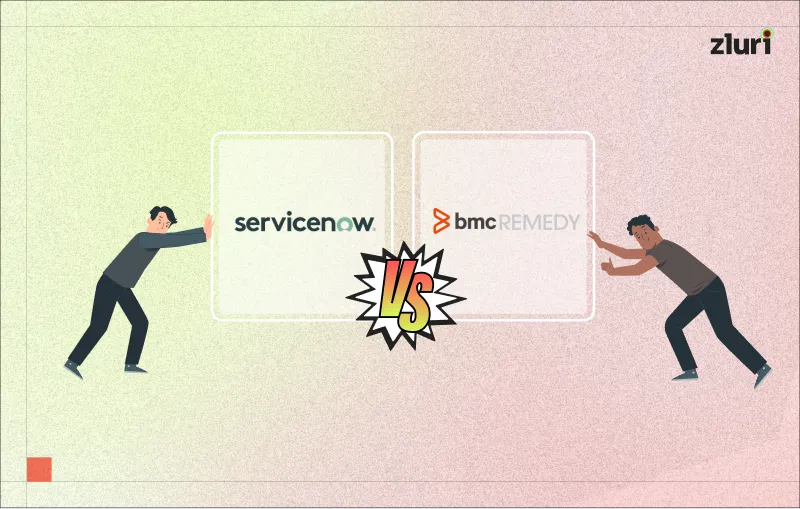



.svg)



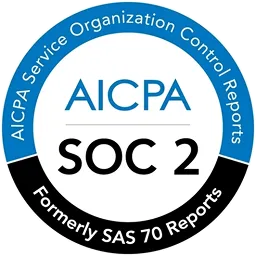
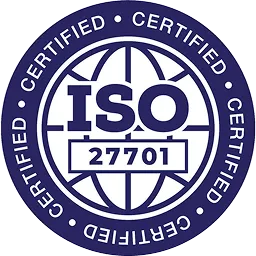

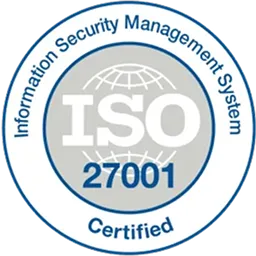
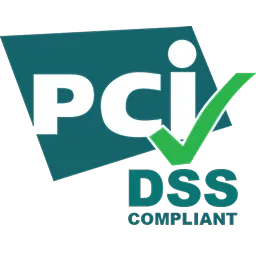


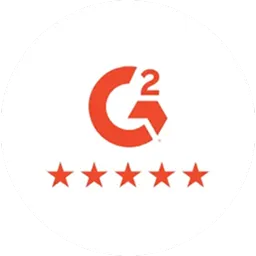



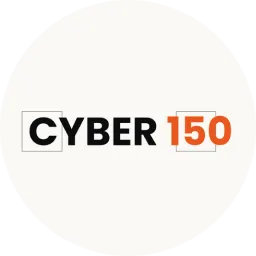






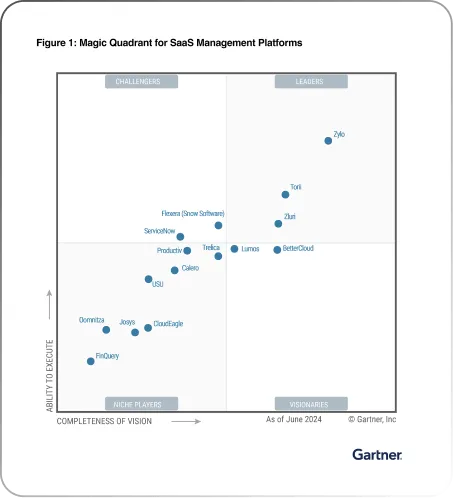






.webp)







.webp)
.webp)





.webp)